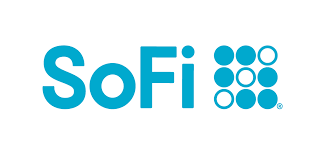2 in 3 Americans Throw Away Money on This 1 Thing
The most common waste of money is right under your nose.
When we think about wasting money, shopping sprees and luxury vacations might come to mind. However, there's a much more insidious, and more common, way in which Americans are throwing money in the trash, quite literally.
In a recent study on wasteful habits done by The Ascent, 70% of respondents admitted to frequently throwing out leftovers or expired food. Food waste was by far the most common waste of money, beating out the second most common -- frequenting fast-food places -- by 16%.
Food waste is draining our wallets -- and hurting the planet
This isn't exactly surprising. One study published in 2018 showed that on average, consumers in the U.S. waste almost one pound of food per day per person. About 20% of the food we purchase ends up in the trash. This number is staggering on its own, and even more so when you consider the implications on your annual budget. In 2018, the average consumer spent $4,464 on food eaten at home. If 20% of that food is wasted, that's almost $900 thrown in the trash each year per person.
Unfortunately, money isn't the only thing being wasted when we throw out food. The land, water, and energy used to grow, process, and transport that food also goes to waste. On top of that, food waste is responsible for the majority of what's being dumped in our landfills, and it generates large amounts of methane, a greenhouse gas that contributes greatly to climate change.
Expired food isn't actually all that bad
Expiration dates are at least partially to blame for America's food waste problem. When a product comes with a "best if used by" date, people often assume that date is tied to food safety. In fact, the "best if used by" date refers to when the product will be at its maximum quality, not when it will go bad.
One man even ate expired food for an entire year just to prove that you can eat a lot of food items well past the expiration date. In other words, don't go running for the trash can just because your food is past the date.
Some foods, such as fresh meats, dairy, eggs, and pre-prepared foods like salad or sushi, have a shorter shelf life. You can usually tell whether or not these foods are still good to eat based on texture and smell. Other foods, such as canned foods, grains, and dried goods can be eaten well past the "use by" date, according to Consumer Reports.
Tips for avoiding food waste
Proper handling and storage is much more important than expiration dates to food safety. Food should be refrigerated at no higher than 40° F, and perishables shouldn't be left at room temperature for more than an hour. If you can't use fresh meats and seafood within a couple of days, place them in the freezer to prolong their shelf life.
The freezer is your best friend when it comes to avoiding food waste, and you can freeze just about anything. When you notice that your fruits and vegetables are going bad, (the most commonly wasted food), slice them up, blanch in boiling water if necessary, and freeze them. Frozen vegetables make for an easy stir fry, while frozen fruits are perfect for smoothies and oatmeal. Browning fruits can also be used for a number of recipes, like breads, pies, and ciders. Instead of throwing out wilted herbs, chop them up and put them in ice cube trays with olive oil.
Even your leftover meals can usually be frozen if you're feeling sick of them. Another trick for making the most of your leftovers is to repurpose them into a new meal. For example, day-old pasta can be baked with scrambled eggs for a pasta frittata. Leftover meat and veggies can be turned into a casserole, a rice bowl, a soup, or a stew.
To prevent food waste from happening in the first place, practice more conscientious grocery shopping habits. Meal planning is a great way to ensure you only have what you need and will use in the kitchen, and you can plan freezer meals so that you only thaw food you're sure you want to eat. Only buy what you need, and try to use up what you already have on hand before making another trip to the supermarket. When you do go grocery shopping, using a rewards credit card that gets you cash back on groceries will help you save a little change.
It's true that saving more money starts in the kitchen. Keeping both your fridge and your finances organized is sure to improve your monthly budget. Out-of-sight food is more likely to go to waste -- and when you can't see where your money is being spent, it's probably going to be wasted as well.
These savings accounts are FDIC insured and could earn you 11x your bank
Many people are missing out on guaranteed returns as their money languishes in a big bank savings account earning next to no interest. Our picks of the best online savings accounts could earn you 11x the national average savings account rate. Click here to uncover the best-in-class accounts that landed a spot on our short list of the best savings accounts for 2024.
Our Research Expert
We're firm believers in the Golden Rule, which is why editorial opinions are ours alone and have not been previously reviewed, approved, or endorsed by included advertisers. The Ascent does not cover all offers on the market. Editorial content from The Ascent is separate from The Motley Fool editorial content and is created by a different analyst team.
Related Articles
View All Articles
